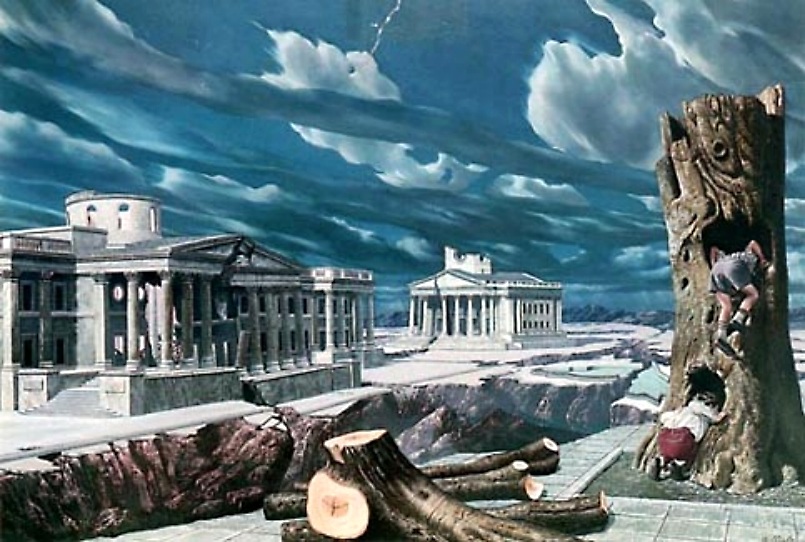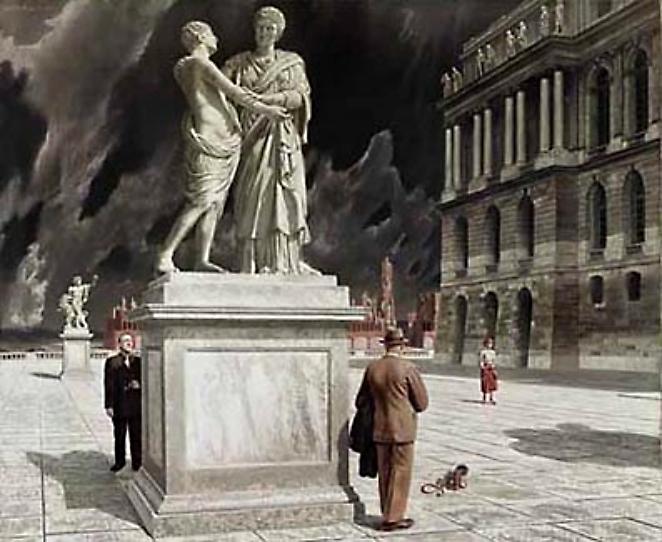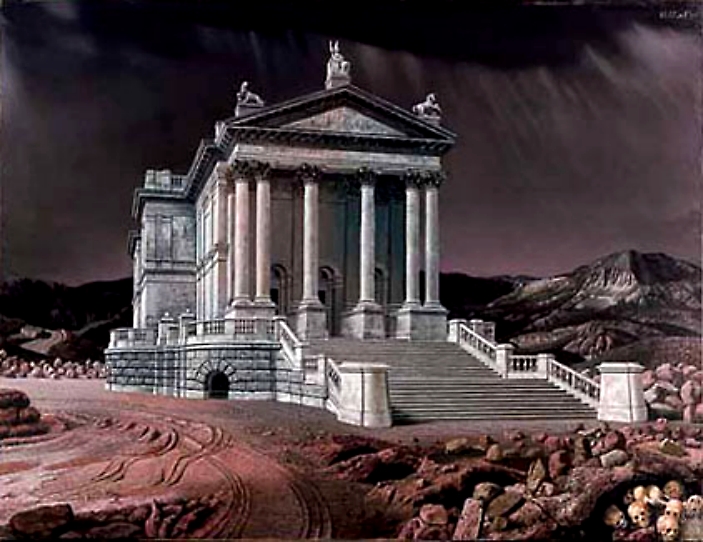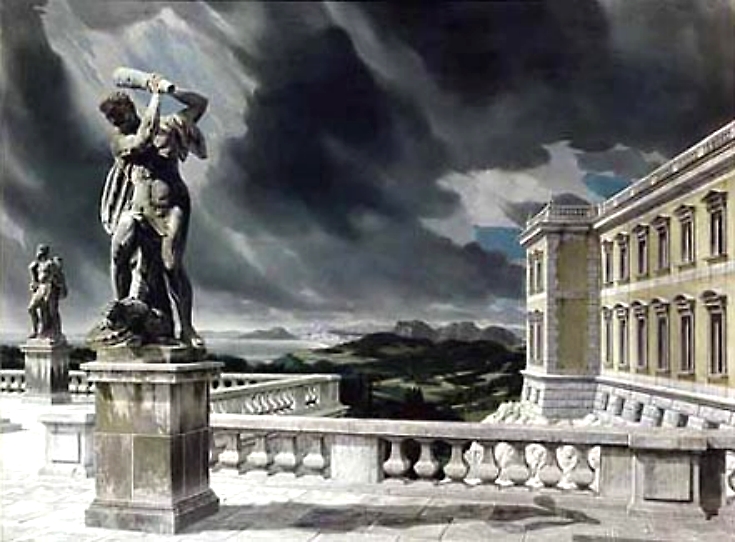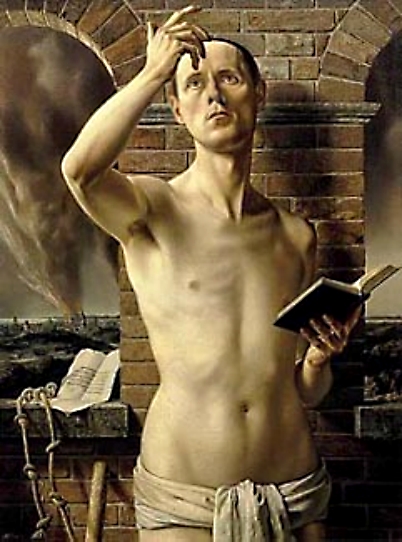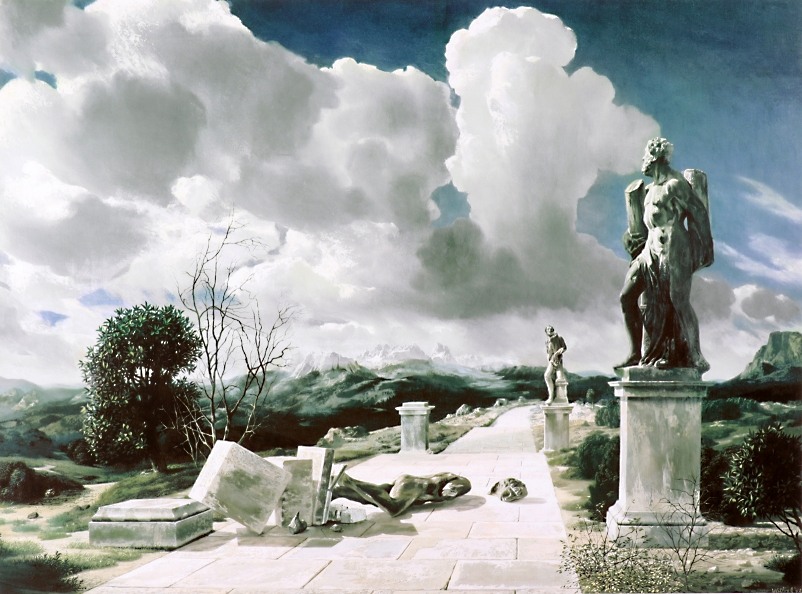Carel Willink
Trafalgar Square
Carel Willink
The Tourist, 1949
Carel Willink
The Tate Gallery
Carel Willink
Terrace with Hercules
Carel Willink
Self-Portrait, 1937
Carel Willink
Surrealistisch Landschap
Carel Willink
Bewerkt
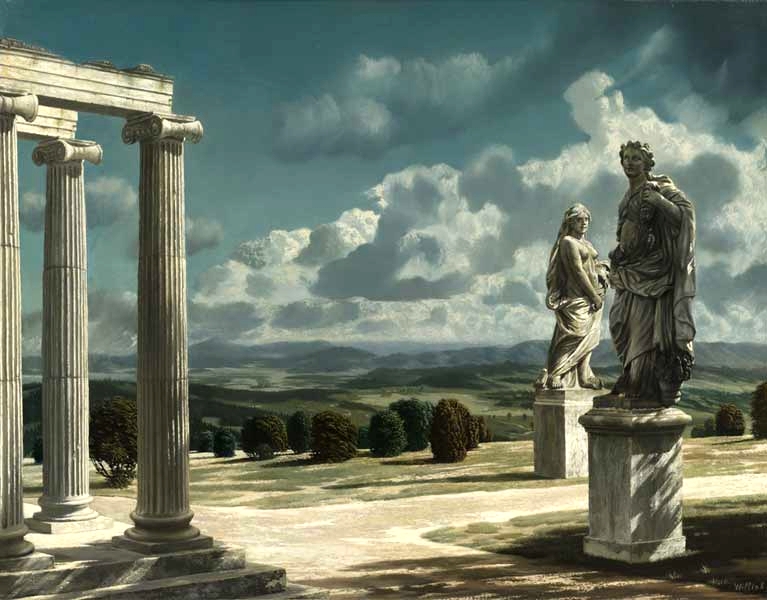
Carel Willink.1900-1983
Self-Portrait
BIOGRAPHY
BORN 7 Mar 1900, Amsterdam - DIED 19 Oct
1983, Amsterdam
REAL NAME Willink, Albert Karel
Carel Willink first studied medicine for
a while and then architecture in Delft. But
he soon moved to the Hague, where he decided
in 1919 that he wanted to be a painter. He
studied in Berlin at the Hans Baluschek's
painting school and started out with expressionist
works. In 1923 he exhibited with the November
Group at the Moabit Glaspalast.
In 1924 he returned to Amsterdam and called
himself a futurist. In 1926 he married Mies
van der Meulen, but she left him in 1928.
In 1931 he travelled through Italy with his
brother Jan. In 1931 he painted "Venus
resting", with Wilma Jeuken (b.1905)
as the model. In 1934 he married Wilma. In
1935 they moved to the Ruysdaelkade in Amsterdam,
where Willink lived until his death.
During the 1940 he painted the portrait of
a mr. Stakenburg and many portrait commissions
would follow over the years. In 1947 he stayed
in Paris and in 1951 he exhibitied at the
Palais des Beaux Arts in Brussels. In 1960
Wilma died and he travelled to Rome to escape
from his grief.
In 1969 he married Mathilda de Doelder, who
was a society figure and had lived with him
since 1963 (when she had been only 21 and
he 60). He painted her naked three times.
Willink started affairs with the mannequin
Andrťe Rupp (1974) and sculptress Sylvia
QuiŽl (1975) and after Mathilde damaged the
portrait he had done of Wilma in 1952 he
threw her out. Willink immediately started
living together with QuiŽl.
On May 19, 1977 Mathilde said on television
that she would commit suicide if the separation
wouldn't be settled in a a way that would
be acceptable to her. When it became formal
she received 135.000 guilders and started
her own gallery in Amsterdam. She also started
an affair with car and coke dealer Gerard
Vittali, who found her death on her bed on
October 25, 1977. She was naked, had a gun
in her hand and a bullet in her head. It
was unclear if she had been killed or had
committed suicide. Willink and QuiŽl didn't
attend the funeral.
Willink married Sylvia QuiŽl and she lived
with him until his death in 1981.
The Magical Realism
Magical realism is a muddled and seemingly
contradictory style of art and literature.
Even for those acquainted with magical realism,
it is hard to distinguish it from similar
genres like realism, surrealism, fantasy,
and science fiction. Magical realism is characterized
by an acceptance of the unreal as a natural
part of reality, thus creating imaginative
and sometimes disturbing worlds. Although
magical realist works often overlap with
surrealism, critics make the distinction
that while surrealism is Freudian and cerebral,
magical realism is always concerned with
external subjects.
Magical Realism in Visual Art
The term "magical realism" was
coined in 1925 by German art historian Franz
Roh to describe the burgeoning art movement
known as Neue Sachlichkeit ("New Objectivity").
This art depicted ordinary subjects with
a mysterious and detached manner. The subjects
painted by these magical realists were ordinary,
but presented in a way that was far from
boring. Although this movement died out in
Germany, artists like Carel Willink, Paul
Cadmus and George Tooker painted works of
art that closely matched the aesthetics of
Roh's magical realism. Like its German predecessors,
these paintings depicted everyday objects
with such rich detail that they had a magical
quality.
Magical Realism in Literature
Literary magical realism refers to a genre
of literature that depicts fantastical, supernatural,
magical elements as ordinary. Likewise, the
ordinary is often described as spectacular.
Similar genres like science fiction and fantasy
create speculative worlds in order accommodate
the unreal; however, magical realist works
use the real world as the setting and any
unreal elements of the story exist naturally
as if they have always been part of the world.
Magical realist works warp the fluidity of
time; favoring a circular pattern of time
instead of linear. Even while events proceed
through a story, there is always the sense
that what is happening will happen again
or has already happened. There are also times
when characters seem to experience different
timelines simultaneously.
Magical realism is commonly associated with
Latin American Boom of the 1960s and 1970s.
Authors like Gabriel Garcia Marquez of Columbia,
Julio Cortazar of Argentina, Carlos Fuentes
of Mexico, and Alejo Carpentier of Cuba used
magical realist techniques to propelled Latin
American literature to the front stage of
world literature. Contemporary Japanese literature
is also known for its use of magical realism.
Famed Japanese authors such as Kobo Abe,
Haruki Murakami, Yasunari Kawabata, and Kenzaburo
Oe have experimented with magical realist
techniques.
The genre of magical realism is adventurous
and exciting. The artwork is rich with detail
and surprisingly mysterious. The literature
is often surreal and unconventional. While
the literary movement petered out, the genre
of magical realism contains some of the most
accomplished authors and some of the most
acclaimed books.
THE MAGIC REALISM
IN ARTE EST LIBERTAS
MOVEMENTS-ARTISTS

